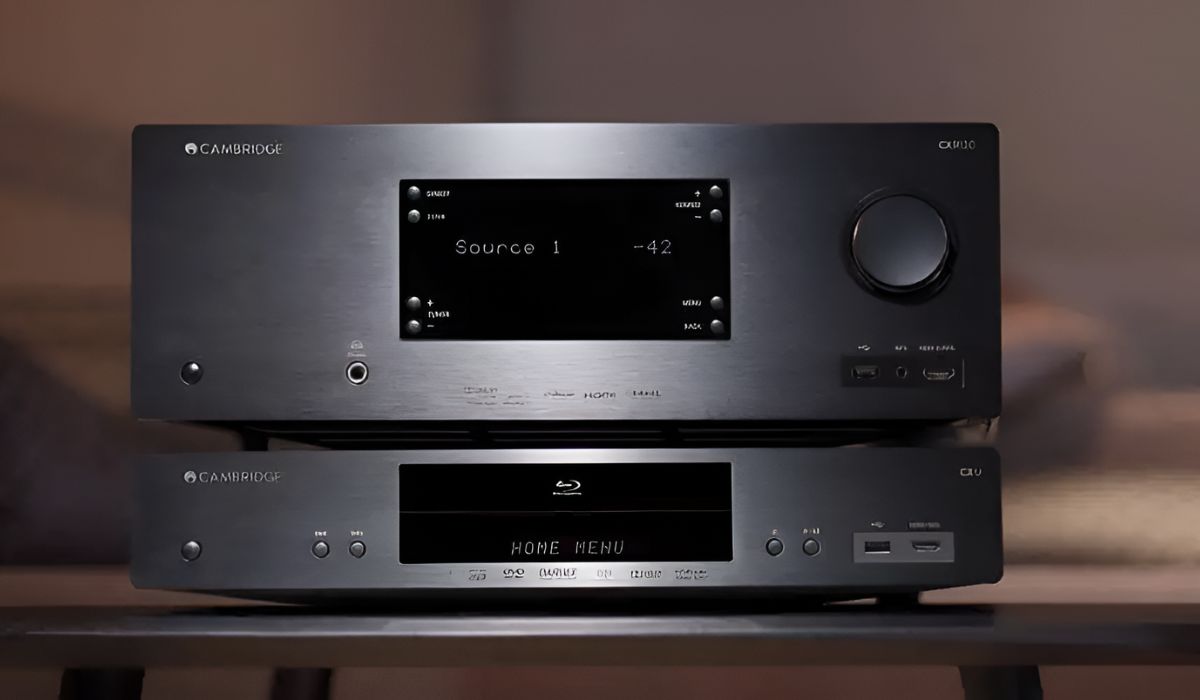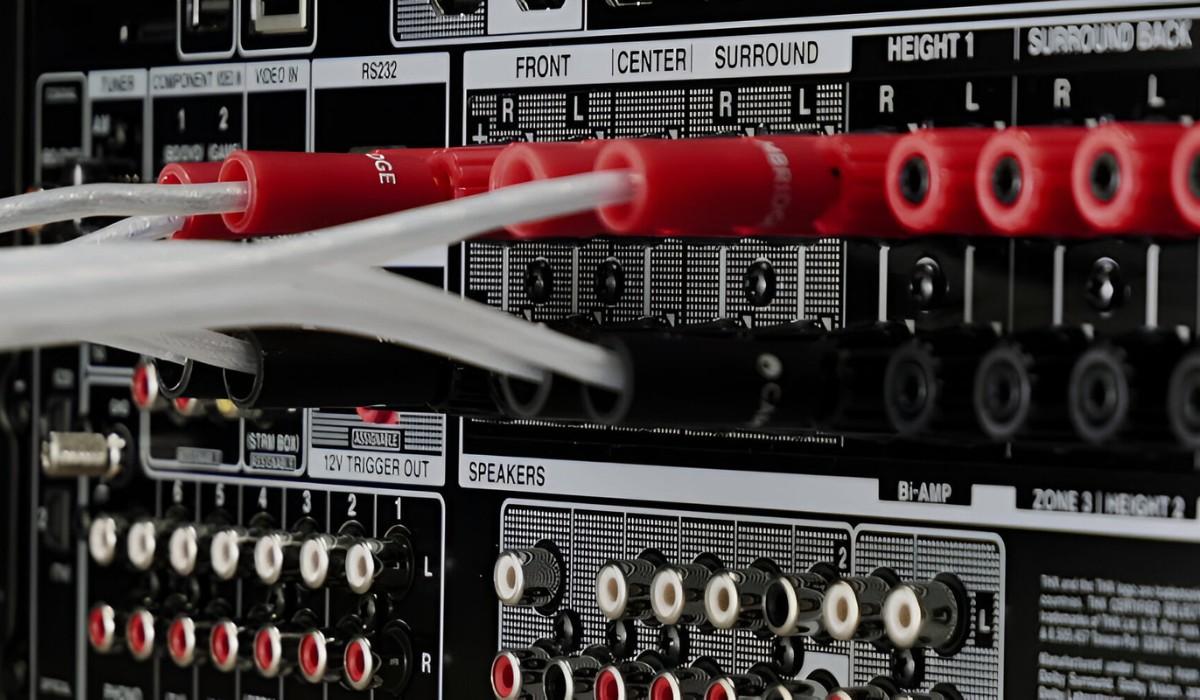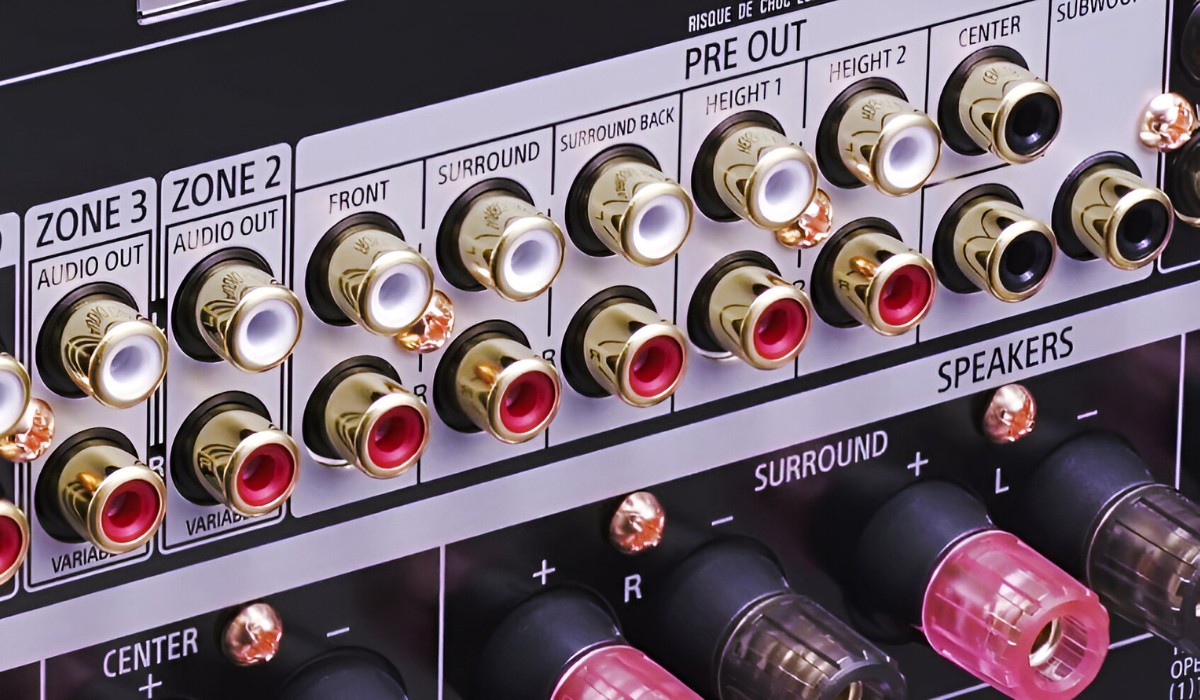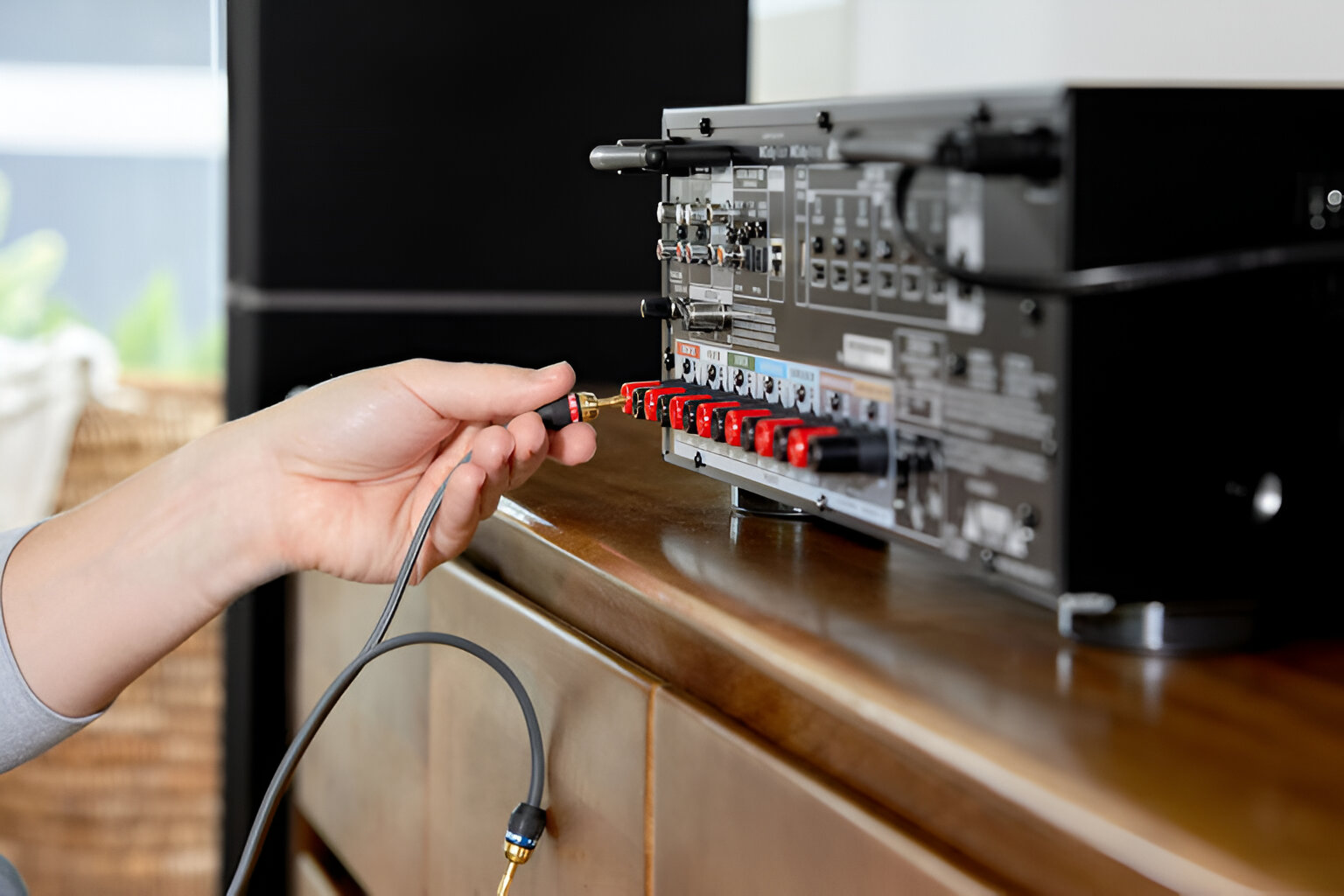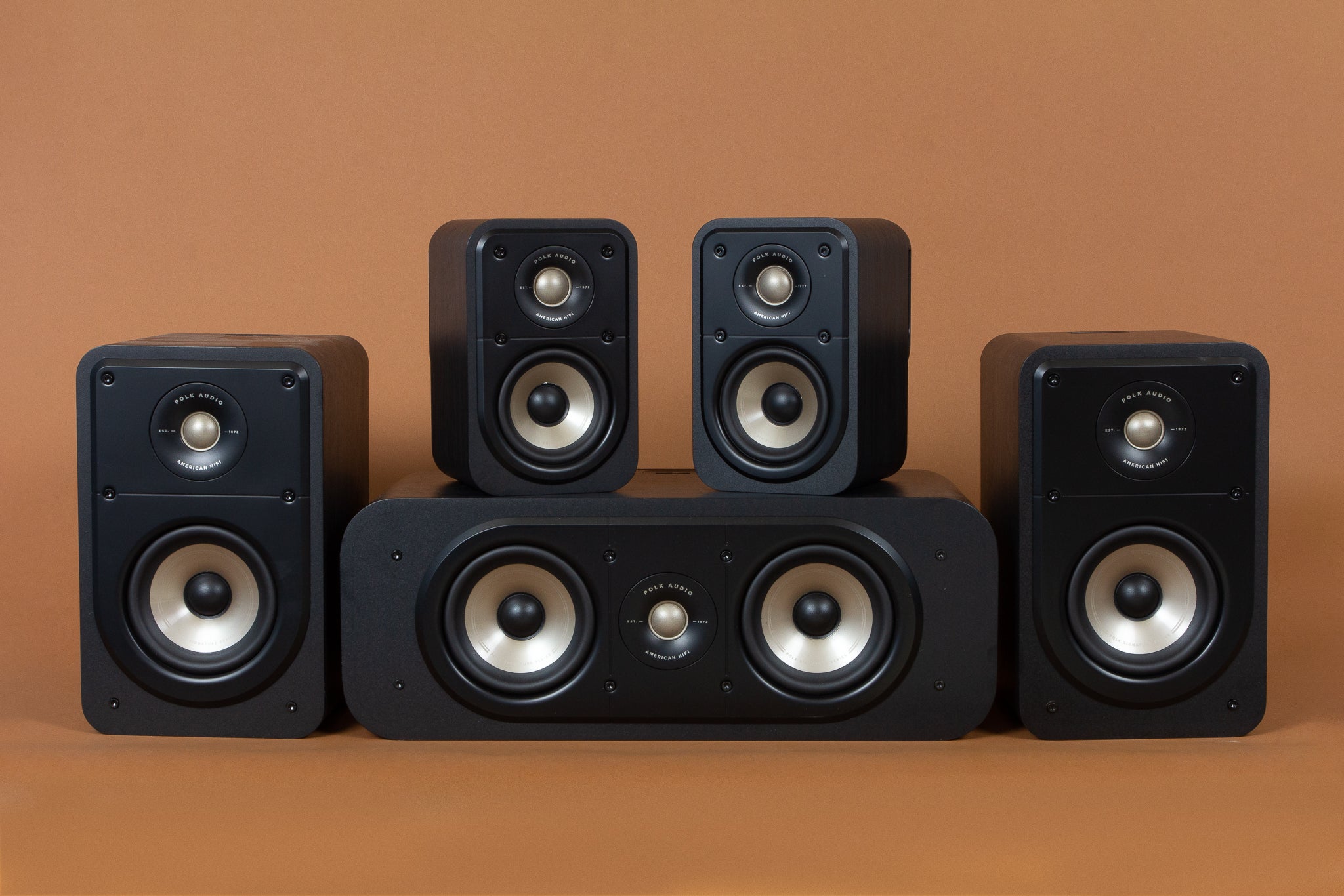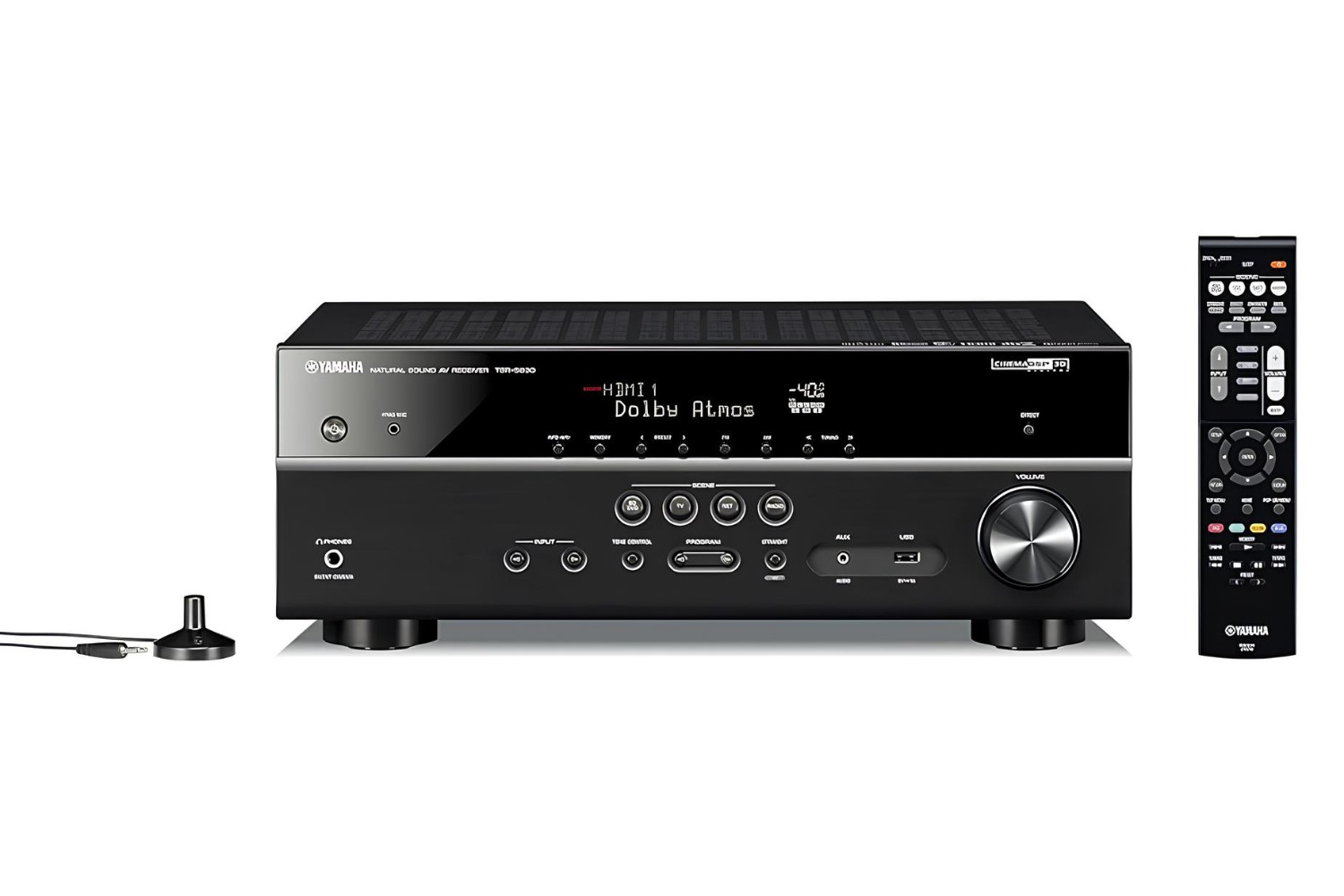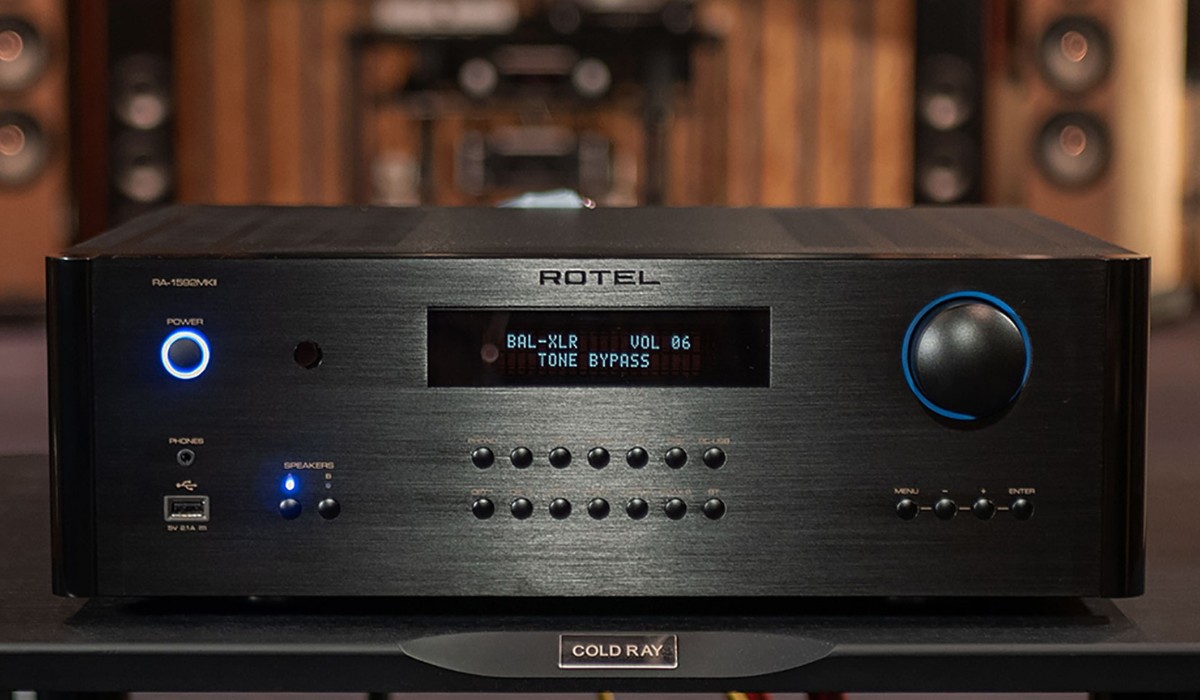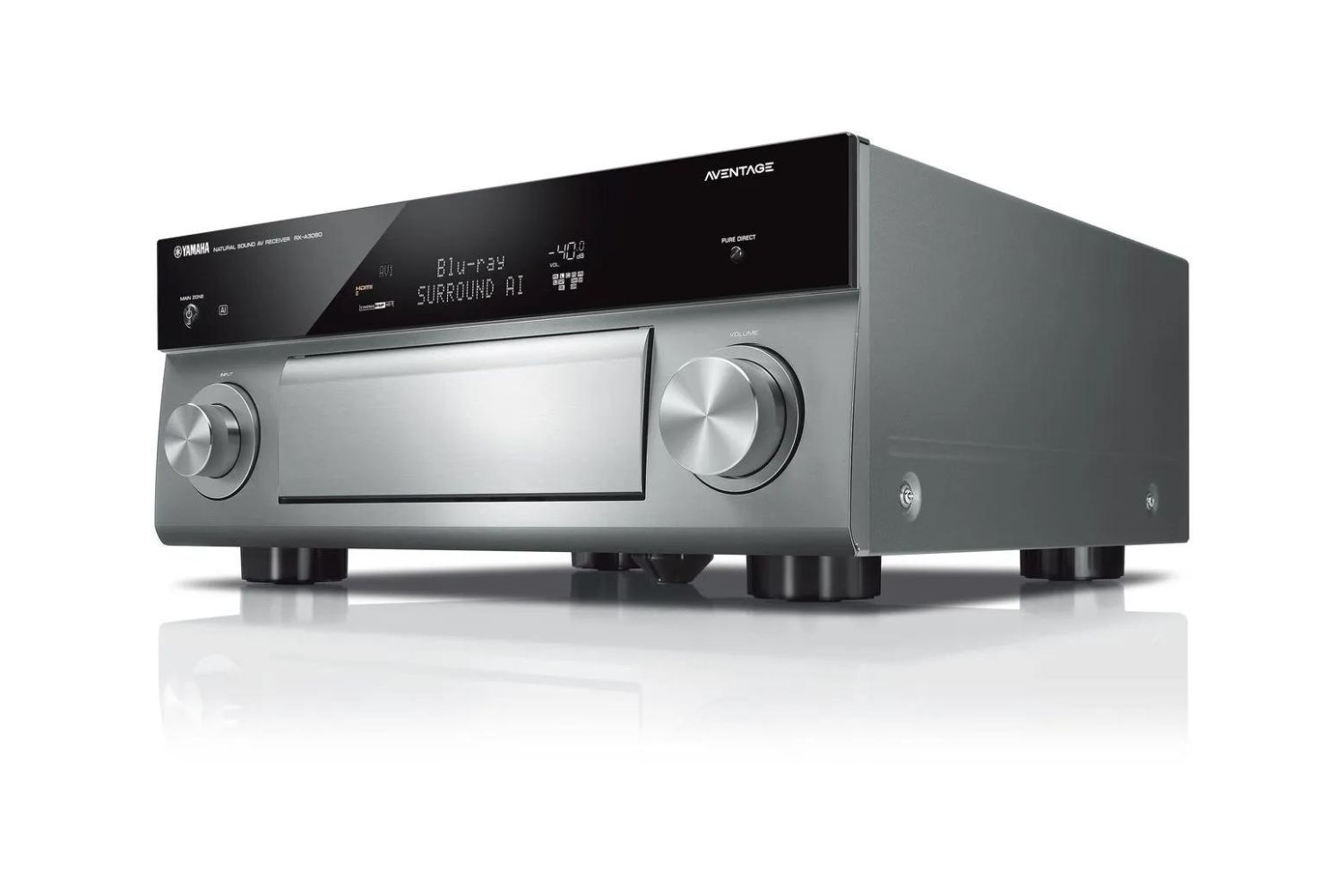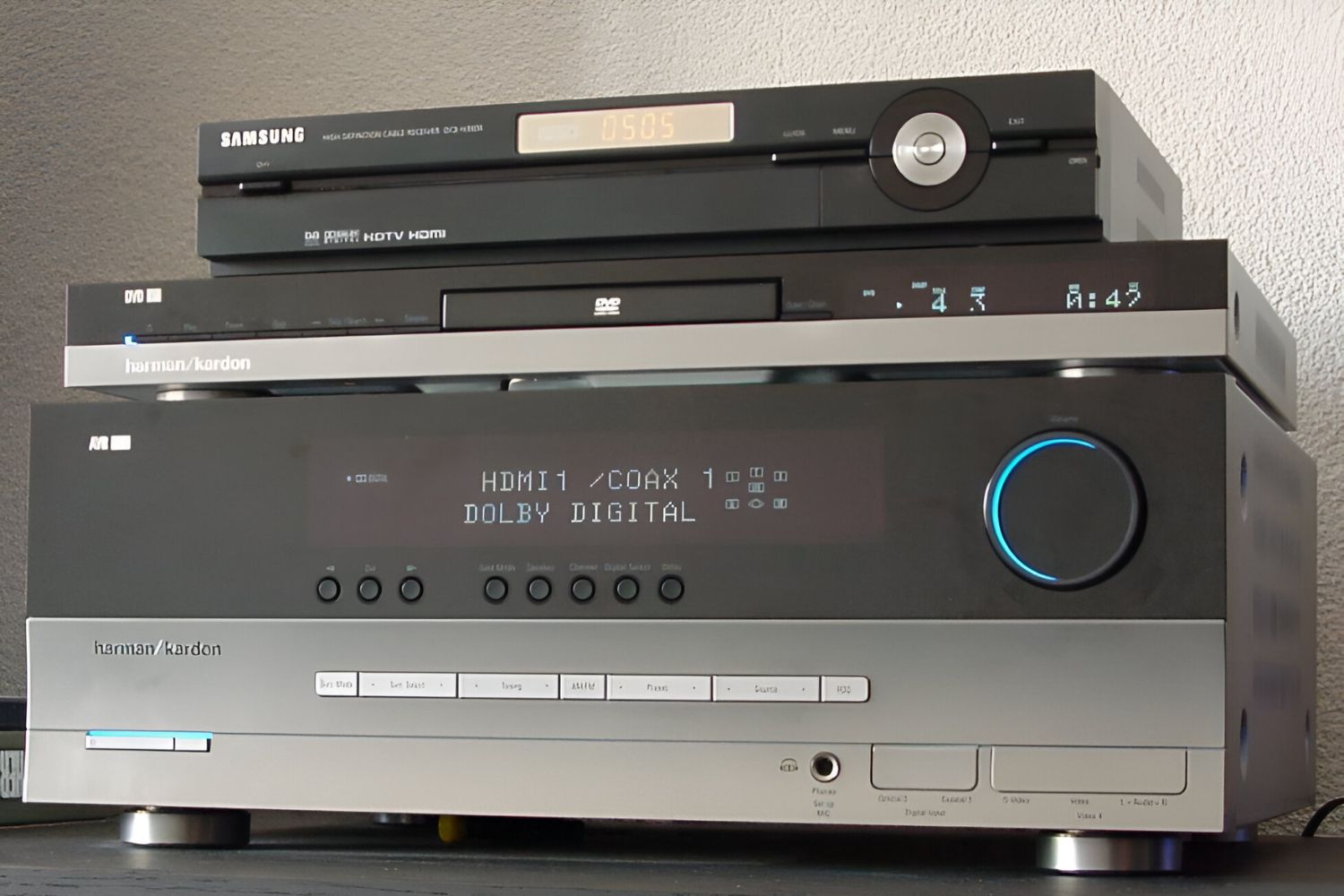Introduction
Welcome to the world of home entertainment, where the quality of your audio and visual experience can be greatly enhanced by the right equipment. Two essential components in any home theater system are the AV receiver and amplifier. These devices play a crucial role in delivering high-quality sound to complement your viewing experience. Whether you are a seasoned audiophile or a casual movie enthusiast, understanding the functions and distinctions of these components can help you make informed decisions when setting up your home entertainment system.
In this article, we will delve into the fundamental aspects of AV receivers and amplifiers, exploring their individual functionalities, key features, and the differences between the two. By the end of this guide, you will have a clearer understanding of how these devices contribute to the overall audio experience in your home theater setup.
So, let's embark on a journey to unravel the mysteries of AV receivers and amplifiers, shedding light on their significance and the factors to consider when selecting the right equipment for your unique audiovisual preferences. Whether you are aiming for immersive surround sound while watching your favorite movies or seeking to elevate your music listening experience, the insights shared in this guide will serve as a valuable resource in your quest for audio perfection. Let's dive into the world of AV receivers and amplifiers to unlock the secrets of unparalleled home entertainment.
What Is an AV Receiver?
An AV receiver, short for audio-visual receiver, serves as the central hub of a home theater system, combining audio and video processing, amplification, and input/output functions in a single unit. This versatile device acts as the nerve center, orchestrating the audio and video signals from various sources and distributing them to the connected speakers and display devices. In essence, an AV receiver functions as a powerhouse that brings together different audio and video components to deliver a cohesive and immersive entertainment experience.
At its core, an AV receiver is designed to decode audio signals, process them according to the selected sound format, and amplify the audio for playback through the connected speakers. Additionally, it manages video signals, allowing seamless switching between different video sources, such as Blu-ray players, gaming consoles, and media streaming devices, and routing the video output to the display device, whether it’s a television or a projector.
Furthermore, AV receivers often feature built-in radio tuners, enabling users to access AM and FM radio stations, as well as support for digital audio streaming services and internet radio. Many modern AV receivers also incorporate network connectivity, allowing for wireless audio streaming from compatible devices and access to online music platforms.
One of the key distinguishing features of an AV receiver is its support for multi-channel audio formats, such as Dolby Atmos, DTS:X, and Auro-3D, facilitating the creation of immersive surround sound environments. This capability is particularly appealing for home theater enthusiasts seeking to replicate the cinematic audio experience within the confines of their living spaces.
Key Features of an AV Receiver
AV receivers boast a myriad of features that contribute to their pivotal role in home entertainment systems. Understanding these key attributes can aid in the selection of an AV receiver that aligns with your specific audiovisual requirements. Here are some of the essential features to consider:
- Audio Decoding and Processing: AV receivers are equipped with advanced audio decoding capabilities, enabling support for various surround sound formats, including Dolby Atmos, DTS:X, and more. This allows for immersive, three-dimensional audio experiences that elevate the realism of movies, music, and games.
- Amplification: The built-in amplification circuitry of AV receivers powers the connected speakers, delivering the necessary wattage and current to drive the audio output with clarity and precision. The amplification stage is crucial in ensuring faithful reproduction of sound across the entire frequency spectrum.
- Video Processing and Connectivity: AV receivers feature video processing capabilities that support multiple HDMI inputs and outputs, facilitating seamless integration of various video sources and display devices. They also often support 4K Ultra HD, HDR (High Dynamic Range), and HDCP 2.2, ensuring compatibility with the latest video standards.
- Room Calibration and Optimization: Many AV receivers come with sophisticated room calibration systems that analyze the acoustic characteristics of the listening environment and automatically adjust audio settings to optimize sound quality. This feature helps compensate for room acoustics and speaker placement, resulting in more accurate and balanced audio reproduction.
- Network Connectivity and Streaming: With built-in Wi-Fi, Bluetooth, and Ethernet connectivity, AV receivers offer seamless access to online music streaming services, internet radio, and audio content from networked devices. This connectivity enables wireless audio streaming and integration with smart home ecosystems.
- Multi-Zone Audio: Some AV receivers support multi-zone audio distribution, allowing users to enjoy different audio sources in separate areas of the home. This feature is ideal for creating independent audio zones, such as a dedicated music setup in another room.
These features collectively contribute to the versatility and performance of AV receivers, making them indispensable components for creating captivating audio experiences within home theater environments.
What Is an Amplifier?
An amplifier, often referred to as a power amplifier, is a fundamental component in audio systems, dedicated to boosting the strength of audio signals to drive speakers and deliver sound with clarity and impact. While AV receivers integrate amplification as part of their multifunctional design, standalone amplifiers focus solely on the task of amplifying audio signals, offering dedicated power and precision for driving speakers in a home audio setup.
Amplifiers are engineered to receive low-power audio signals from preamplifiers or source components, such as CD players, turntables, or AV receivers, and elevate their voltage and current levels to a level suitable for driving speakers. By doing so, amplifiers ensure that the audio signals are reproduced with fidelity, enabling speakers to produce sound at the desired volume levels without distortion.
When selecting an amplifier, factors such as power output, impedance matching with speakers, and overall sound characteristics play a crucial role in achieving the desired audio performance. Amplifiers come in various configurations, including stereo (two-channel) and multi-channel designs, catering to different speaker setups and listening environments.
Furthermore, amplifiers are often categorized based on their class of operation, with Class A, Class AB, Class D, and other designs offering distinct efficiency and sonic characteristics. Each class of amplifier presents trade-offs in power efficiency, heat dissipation, and audio fidelity, allowing users to tailor their amplifier choice to suit their specific preferences and system requirements.
While amplifiers may lack the extensive feature set of AV receivers, their singular focus on amplification results in dedicated power delivery and sonic precision, making them a vital component for audiophiles and music enthusiasts seeking to optimize the performance of their speakers and achieve heightened musical enjoyment.
Key Features of an Amplifier
Amplifiers, despite their primary function of amplifying audio signals, encompass several key features and attributes that influence their performance and suitability for specific audio setups. Understanding these features can aid in the selection of an amplifier that aligns with your sonic preferences and speaker requirements. Here are some essential features to consider:
- Power Output and Impedance Handling: Amplifiers are rated based on their power output, typically measured in watts per channel. It’s crucial to match the amplifier’s power output with the power handling capabilities of the connected speakers to ensure optimal performance and prevent damage to the speakers. Additionally, the amplifier’s ability to handle speaker impedance variations plays a vital role in maintaining stability and delivering consistent power to the speakers.
- Class of Operation: Amplifiers are classified into different operational classes, such as Class A, Class AB, and Class D, each offering distinct efficiency and sonic characteristics. Class A amplifiers, for instance, provide high-quality sound but are less efficient, while Class D amplifiers offer greater efficiency with minimal heat generation, suitable for compact installations.
- Signal-to-Noise Ratio (SNR) and Distortion Levels: The signal-to-noise ratio indicates the level of background noise present in the amplifier’s output, with higher SNR values signifying cleaner sound reproduction. Additionally, low distortion levels ensure that the amplified audio signals closely resemble the original input, preserving the integrity of the audio content.
- Input and Output Connectivity: Amplifiers feature various input options, including analog RCA, balanced XLR, and digital inputs, allowing seamless integration with different audio sources and preamplifiers. Output connectivity encompasses speaker binding posts or terminals, accommodating different speaker wire configurations and ensuring secure connections.
- Heat Dissipation and Thermal Management: Given the power dissipation inherent in amplification, effective heat management is crucial for maintaining the amplifier’s operational stability and longevity. Amplifiers employ heat sinks, cooling fans, and thermal protection circuits to mitigate heat buildup and safeguard against thermal stress.
- Bridgeable and Mono Operation: Some amplifiers offer bridgeable configurations, enabling the combination of multiple amplifier channels to drive a single speaker, effectively doubling the power output. Mono operation mode allows for dedicated amplification of a single channel, ideal for powering subwoofers and center channel speakers.
These features collectively contribute to the performance, versatility, and compatibility of amplifiers, allowing users to tailor their amplifier selection to suit their specific audio preferences and system requirements.
Differences Between an AV Receiver and an Amplifier
While both AV receivers and amplifiers play integral roles in home audio systems, they exhibit distinct characteristics and functionalities that set them apart. Understanding the differences between these two components can provide valuable insights into their respective contributions to audio reproduction and system integration. Here are the key distinctions between an AV receiver and an amplifier:
- Functionality: An AV receiver serves as a comprehensive audio-visual hub, combining audio and video processing, amplification, and input/output switching within a single unit. In contrast, an amplifier is primarily dedicated to amplifying audio signals and powering speakers, focusing solely on the task of delivering robust and faithful audio reproduction.
- Integrated Features: AV receivers incorporate a wide array of features, including audio decoding for surround sound formats, video processing and switching, built-in radio tuners, network connectivity, and multi-zone audio distribution. Amplifiers, while offering various input and output connectivity options, lack the extensive feature set of AV receivers, emphasizing pure amplification without additional processing or video capabilities.
- Amplification Design: AV receivers integrate amplification circuits as part of their multifunctional design, providing power and processing for driving speakers in a home theater setup. Standalone amplifiers, on the other hand, are dedicated solely to amplifying audio signals, offering focused power delivery and sonic precision without the added complexity of video processing or switching functions.
- System Flexibility: AV receivers are designed to be all-in-one solutions, catering to the needs of users seeking a unified audio-visual control center for their home entertainment setup. Amplifiers, while lacking the extensive feature set of AV receivers, offer greater flexibility in system configuration, allowing users to pair them with separate preamplifiers, processors, and source components to create customized audio systems tailored to specific preferences.
- Application Focus: AV receivers are commonly employed in home theater environments, where the integration of audio and video processing, multi-channel surround sound, and connectivity with various audio-visual sources is paramount. Amplifiers, especially high-quality stereo and multi-channel designs, are favored in dedicated two-channel audio setups, where the emphasis is on achieving pristine, high-fidelity sound reproduction for music listening and critical listening applications.
These differences underscore the unique roles and capabilities of AV receivers and amplifiers, providing users with distinct options for fulfilling their audio and visual requirements within home entertainment systems.
Choosing the Right AV Receiver or Amplifier for Your Home Theater System
When selecting the core audio component for your home theater system, whether it be an AV receiver or a standalone amplifier, several factors should be considered to ensure the optimal integration and performance within your setup. Here are some essential considerations to guide your decision-making process:
- System Requirements: Assess the specific audio and video processing needs of your home theater environment. If you prioritize seamless integration of multiple audio-visual sources, support for surround sound formats, and video switching capabilities, an AV receiver may be the ideal choice. Alternatively, if you seek dedicated amplification for high-quality stereo or multi-channel audio reproduction, a standalone amplifier paired with a preamplifier or processor may better suit your requirements.
- Speaker Configuration: Consider the number of speakers in your home theater setup and their power handling capabilities. If you have a multi-channel speaker arrangement, such as a 5.1 or 7.1 surround sound system, an AV receiver with integrated amplification for multiple channels may simplify the setup process. For stereo configurations or systems with separate power amplifiers, a standalone amplifier offers flexibility in tailoring power delivery to individual speakers.
- Audio Preferences: Evaluate your sonic preferences and the intended use of your home theater system. If you prioritize immersive surround sound experiences for movies, gaming, and multi-channel audio content, an AV receiver equipped with advanced audio decoding and processing capabilities is well-suited to deliver enveloping soundscapes. For audiophiles and music enthusiasts seeking pristine stereo reproduction or dedicated multi-channel amplification for music listening, a high-quality amplifier may provide the sonic purity and power delivery desired.
- Future Expandability: Consider the potential for system expansion and future upgrades. AV receivers often offer built-in support for emerging audio and video technologies, ensuring long-term compatibility with evolving entertainment standards. Standalone amplifiers, especially high-performance models, provide the flexibility to upgrade preamplifiers, source components, and speakers independently, allowing for tailored enhancements to specific system elements.
- Room Acoustics and Calibration: Take into account the acoustic characteristics of your home theater space. If your room presents acoustic challenges or varying speaker placement options, an AV receiver with advanced room calibration and optimization features can help compensate for acoustic anomalies and ensure balanced audio reproduction. Standalone amplifiers, while lacking integrated room calibration, offer the flexibility to incorporate external room correction solutions and tailored acoustic treatments for precise sound tuning.
By carefully evaluating these factors and aligning them with your specific home theater requirements, you can make an informed decision when choosing between an AV receiver and an amplifier, ultimately enhancing the audio performance and immersive capabilities of your home entertainment system.
Conclusion
As we conclude our exploration of AV receivers and amplifiers, it becomes evident that these components play vital roles in shaping the audio experience within home entertainment systems. The AV receiver stands as a multifaceted powerhouse, seamlessly integrating audio and video processing, amplification, and connectivity features to create immersive and cohesive audio-visual environments. Its versatility and all-in-one design make it a compelling choice for users seeking a centralized control center for their home theater setups.
On the other hand, the amplifier, with its singular focus on amplifying audio signals and driving speakers, offers dedicated power delivery and sonic precision, making it an essential component for audiophiles and music enthusiasts aiming to optimize the performance of their speakers and achieve heightened musical enjoyment.
When considering the right component for your home theater system, whether it be an AV receiver or a standalone amplifier, it’s essential to align the features and capabilities of each with your specific audiovisual requirements, speaker configuration, and sonic preferences. By carefully assessing these factors, you can make an informed decision that enhances the audio performance and immersive capabilities of your home entertainment system.
Ultimately, the choice between an AV receiver and an amplifier hinges on the unique needs and aspirations of the user, whether they seek a unified audio-visual control center with extensive features or a dedicated powerhouse focused on delivering pristine audio reproduction. Whichever path you choose, the world of home entertainment awaits, ready to deliver captivating audio experiences that elevate your enjoyment of movies, music, and gaming within the comforts of your own home.







